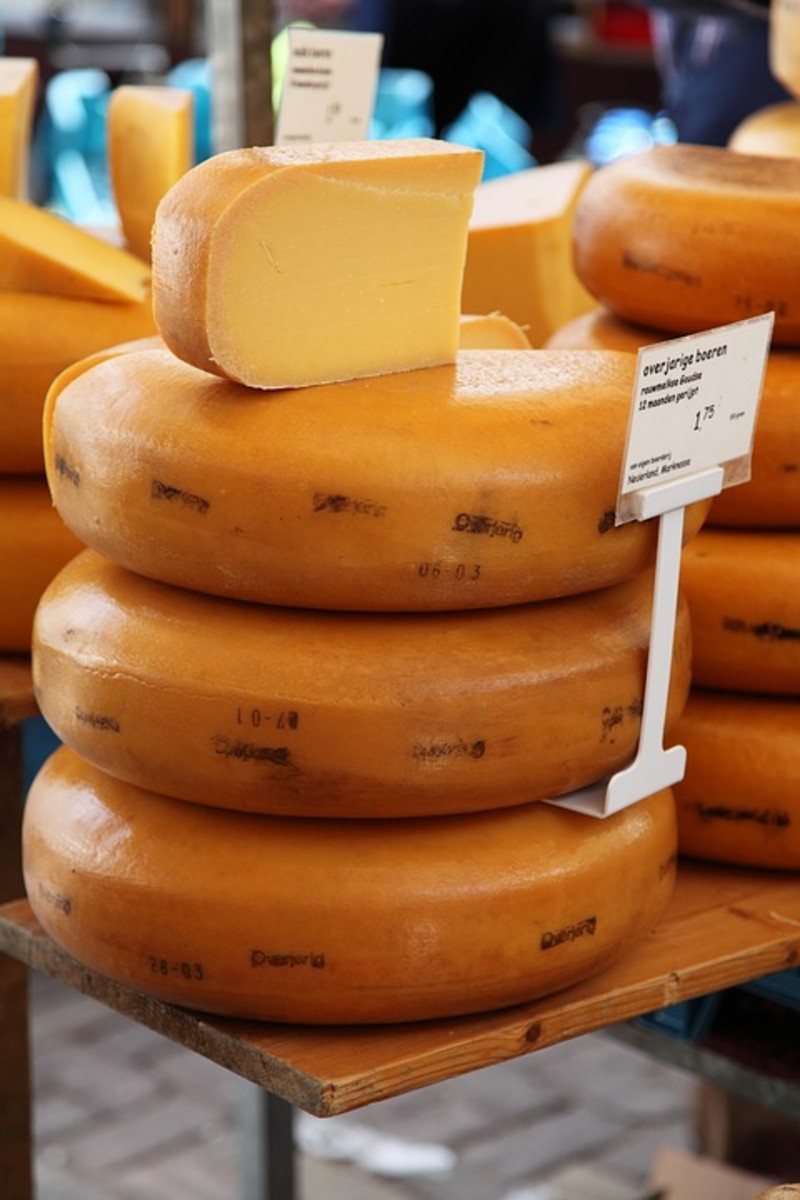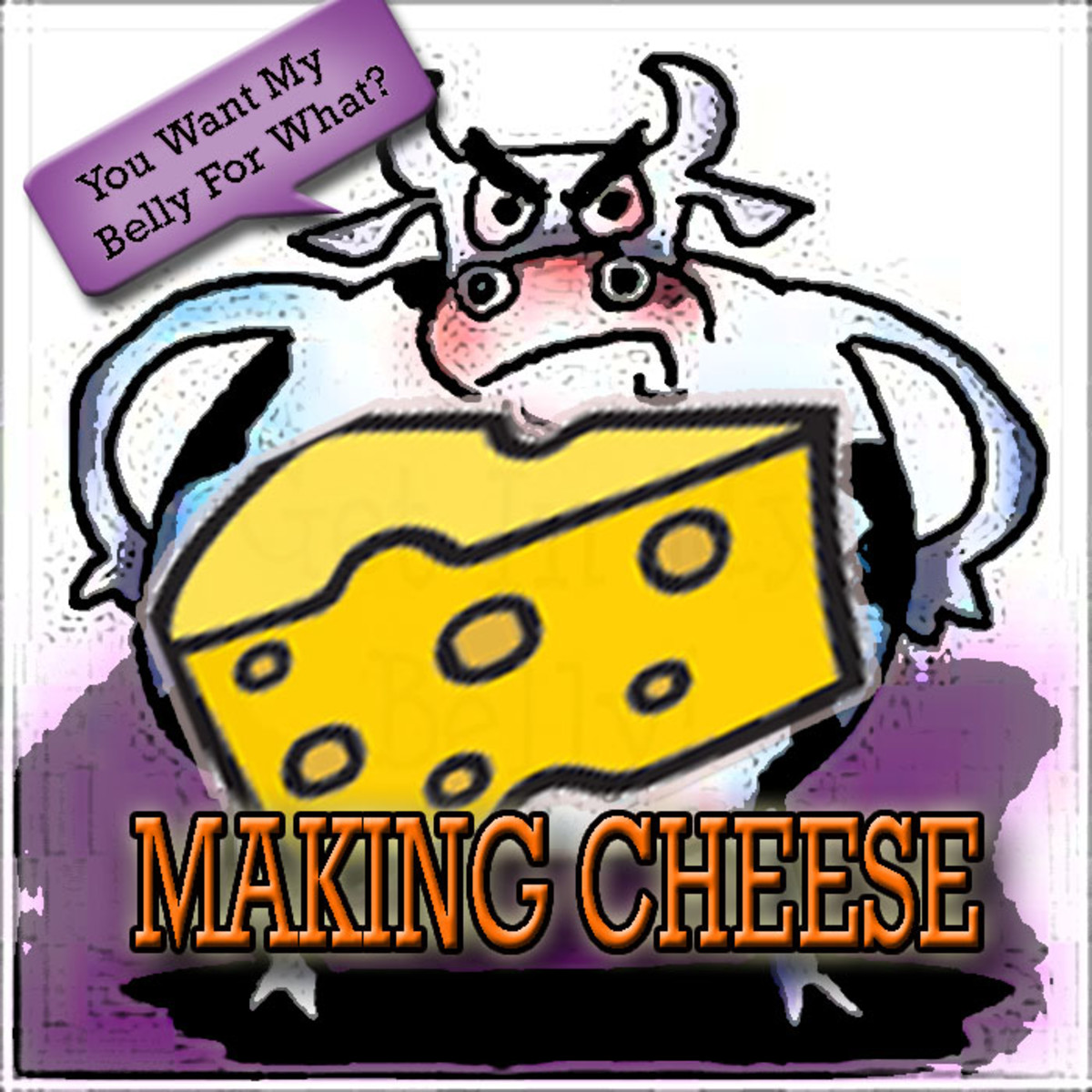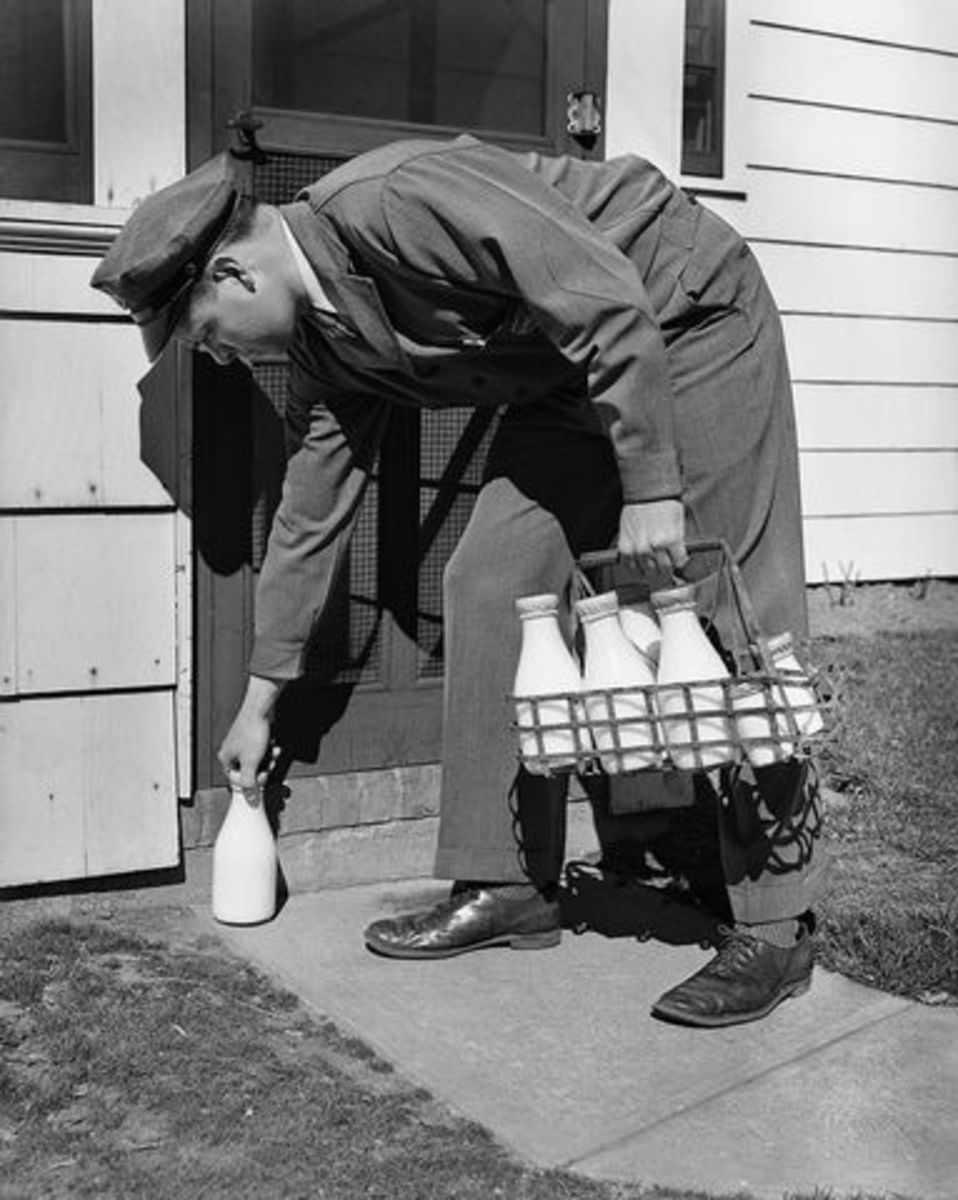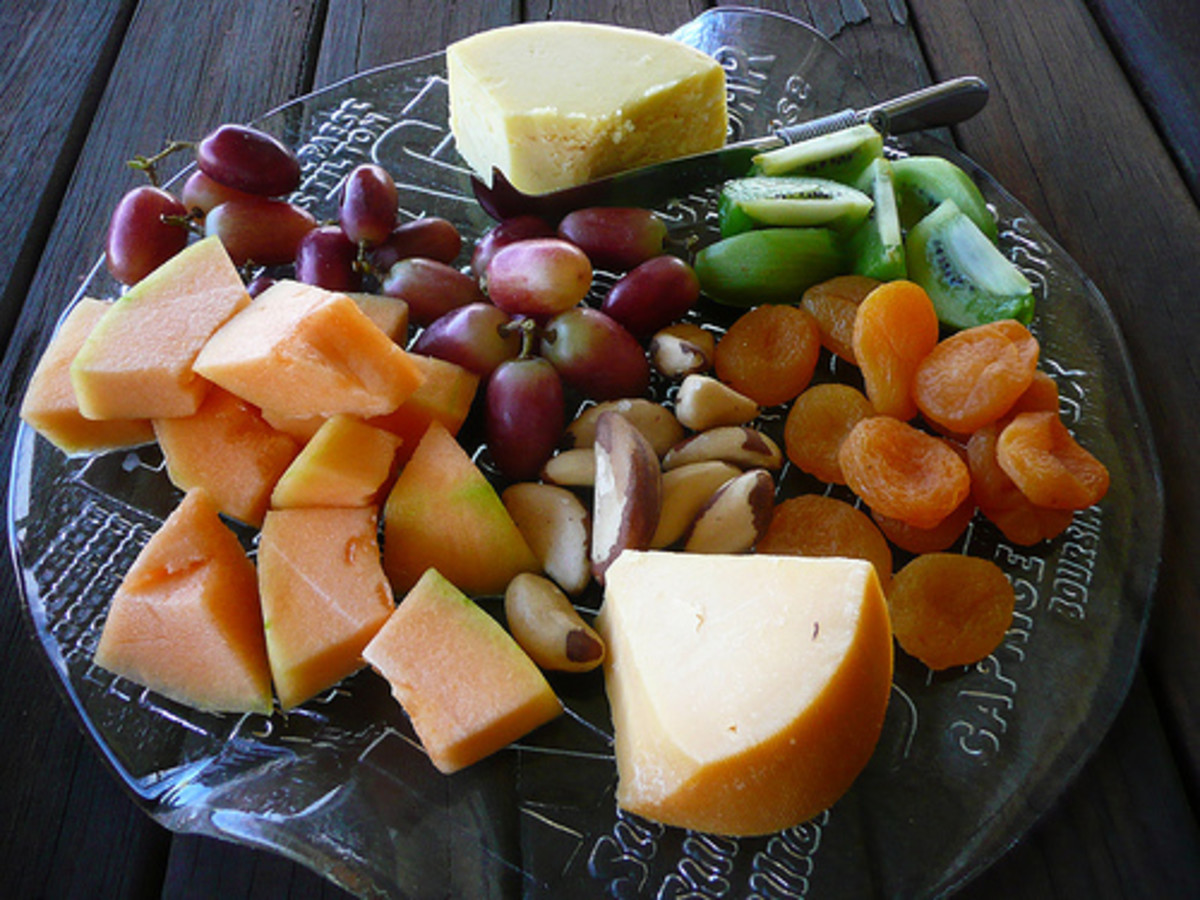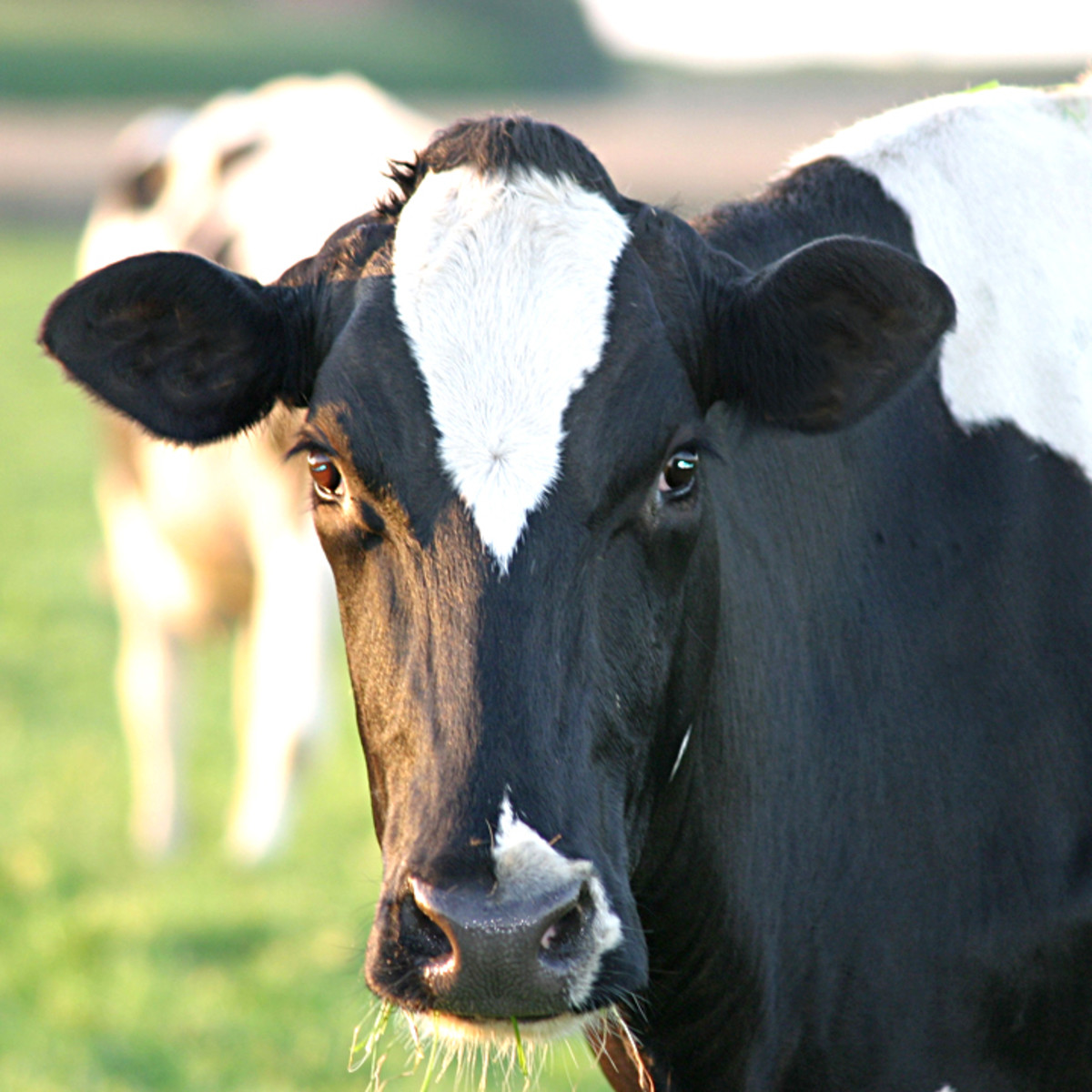How To Create The Perfect Christmas Cheeseboard - Get Ready To Cut The Cheese!
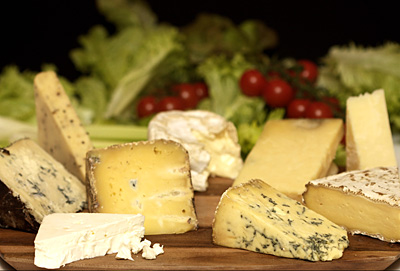
This article is about how to choose and prepare cheese, including aging it to really get the flavours going for a top quality cheeseboard.
The common way people eat cheese is to buy some cheese from the supermarket a couple of days before a big occasion, like christmas for example and then eat it straight from the fridge. You can get more from your cheese by choosing the right cheeses and letting them age.
I actually eat decent cheese all year round so these tips are good at any time of the year, but as I am approaching the time that I generally start preparing my christmas cheese, I thought I'd share my approach, for the rest of the food lovers out there.
The first thing to do is to decide what cheese you want to buy. Now to have a decent cheese selection, you will need some varied cheeses. As I am in the UK then the cheese selection here will be different to the sort of cheeses you can get in other countries, but I'll tell you what I buy and you can tell me your stories of cheese and what delicious cheeses are available in your area at the bottom in the comments section.
Here are the cheeses I buy.
This is Stilton. This one isn't too old, so the blue veins are not too developed. Yet!
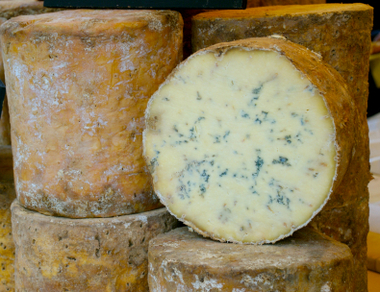
Stilton
Stilton is a great cheese and absolutely essential in a cheeseboard. It can only be classified as Stilton if it is made in a certain area and reaches a certain quality, otherwise it is just sold as blue cheese. It's the cheese that non cheese eaters will be scared of as it looks a bit intimidating if you've only ever eaten basic cheddar cheese, but it's perfectly safe and extremely tasty.
As I said, it is a blue cheese, which means that as it aged then blue mould grew throughout the fissures in the cheese. The mould spores are introduced at the manufacturing stage, it is mould but it is only penicillin, so not dangerous at all and essential for Stilton as this is is what gives the cheese its flavour. Now I won't go in to the manufacturing process here as there is no need and if you want to find that info out you can, but what I will say is that this cheese is typically sold at about 9 weeks old. The longer you age the cheese, the better the flavour will be, so let's get this one in the basket and start looking at the next one!
Camambert. It only gets runny if it is warm / aged sufficiently. It is delicious when it starts to get like this!
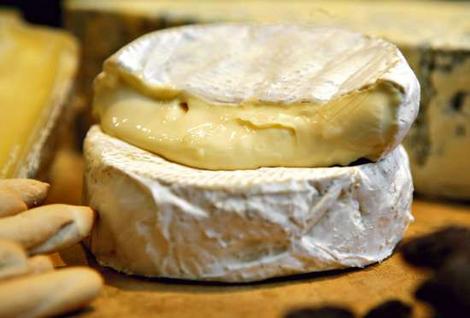
Camembert
Camambert is another essential cheese. It has a completely different character to Stilton, or any of the blue cheeses. This one is sold in round cake like packages and doesn't have a mould in there, instead bacteria are introduced during the manufacturing process.
Once again these aren't the sort of bacteria that will rip your flesh from your bones, they're just there to help the cheese get its flavour. Camembert is sold from 3 weeks old, but the problem with young camambert is that it doesn't really have a lot of flavour. Once it has had a few weeks more aging, then it takes on a beautiful cauliflower like taste, which is a lot nicer and tastier, so if you've always been underwhelmed by it, then give it some time and you may (will) be pleasantly surprised how delicious it can be!
This is a wedge of brie. It is considered bad form to take the tip off when sharing it.
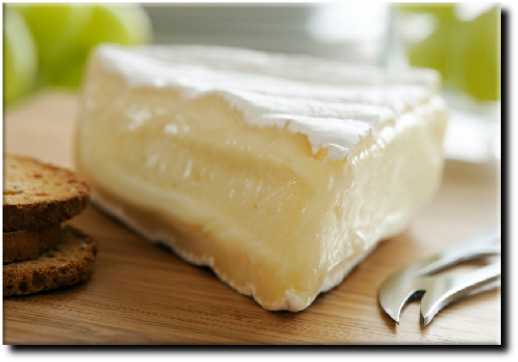
Brie
Brie is similar to camambert, in that it is another soft cheese made from cows milk that is made in a wheel shape. However it is different to camambert as not only is brie higher in fat, you tend to buy camambert in small round wheels, whereas brie is usually sold in wedges. As brie is made in much larger wheels than camambert it turns into a different tasting cheese. This is another cheese that a lot of people don't really taste at its full potential, when freshly bought it is often pretty much flavourless and that is how most people know it. A few weeks of aging in the right conditions and then you have a much different cheese!
This one is just starting to get runny. Creamy, tangy and delicious
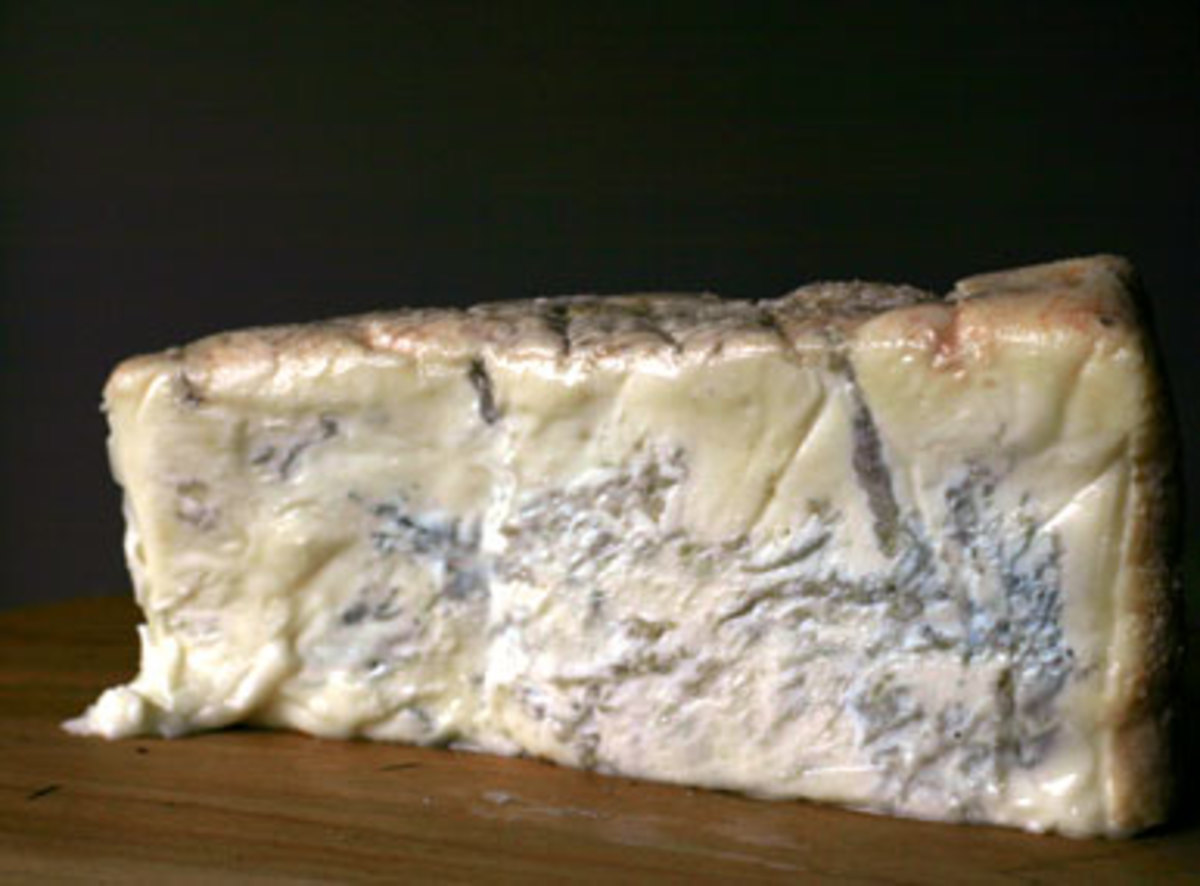
Gorgonzola
Gorgonzola is another essential cheese in my opinion and no cheeseboard should be without it. It is another soft cheese, but this one has a very different taste to the others and it may not be to everyones taste as it has a tangy but also creamy taste. I love it.
This cheese is aged for 3-4 months after being made, so is already pretty old and flavoursome when you get it from a supermarket. Once again, aging will only improve the flavour. Gorgonzola does get a bit funky when it gets really old and quite runny too. The taste just gets better though.
The above cheeses are the staples of a cheeseboard and should be bought as a baseline. There are lots of different cheeses out there and I can't cover the lot, but I also like to buy a cheese called blackstick, which is a blue cheese and I also like some of the dutch hard cheeses, they won't spread onto a cracker, but they can have a lovely nutty flavour. Of course tasting lots of cheeses is the only way to determine what you like.
Aging your cheese
Buying the above cheeses from a supermarket or a cheese vendor is all well and good, but putting them in the fridge then getting them out straight after your dinner to eat is not really going to cut it. Well, you can do that, but instead I suggest the following.
If you have a good meal coming up, for example christmas and know you want some good cheeses, then buy them early. I like to buy my christmas cheese in November, about halfway through. The cheeses then get put into individual tupperware boxes and then hung from a hook attached to the ceiling in the garage.
Cave aged cheese. I'd love a cave of my own..
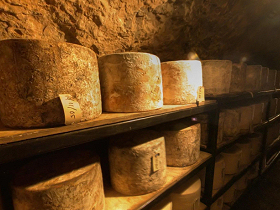
I would prefer not to have to have the tupperware and the bag and just have them under a cheese dome, but of course you have to be aware of bugs and mice etc, all of which will happily get stuck in to your cheese, so you should cover them up really if you want to have anything left. If you put the cheese all in together then it will take on the flavours of the other cheeses, so separating is a good idea.
At first my friends were quite surprised when I first started doing this that I didn't store my cheese in the fridge but they now appreciate it as they usually get to eat some of my cheese!
The good thing about the UK as far as cheese goes anyway, is that november and december are pretty cool months. The cheese doesn't get too hot, but it also is not too cold either, so the bacteria and mould really get the chance to do their thing.
By the time the cheese gets brought into the house, it has matured perfectly as it has had another 6 weeks or so aging time, which really gets the flavours going. Cheese was always traditionally aged in caves as they are cool and moist, so ideal conditions. A garage is the next best thing!
This is a cheese dome. This lot should see you through a meal..
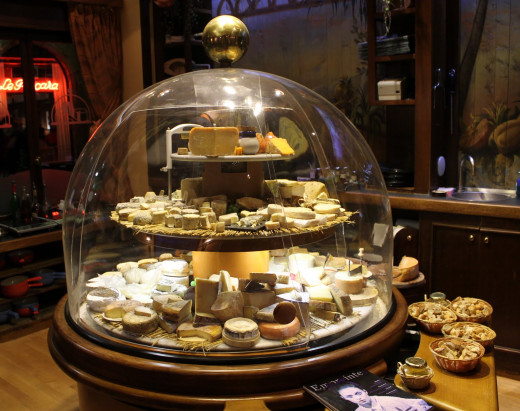
What do you think about aging your cheese?
When you're a day or so from your meal, then bring the cheese in and put it on your cheeseboard and under your cheese dome. You want the cheese to warm up to room temperature so you get the best taste from it.
Never eat cheese cold from the fridge, you won't get the flavours at all. A cheese dome helps with this and of course you also have the look of the cheese itself sitting under the dome waving at you and your guests.
A large collection of cheese under a dome is a bit of a talking point in itself and a nice thing to look at in the kitchen in my opinion!
The next part is the eating. I don't need to tell you how to do that! If you have never tried aging your cheese before, you'll be amazed at how much better the flavours are once they've had a few weeks of resting, relaxing and maturing.
I usually eat my cheese with port. I have written another article about that, linked below so if you have an interest in port then give that a read.
If you have any comments, then please leave them below. Enjoy your cheese!


